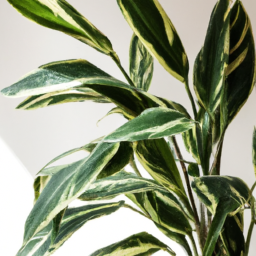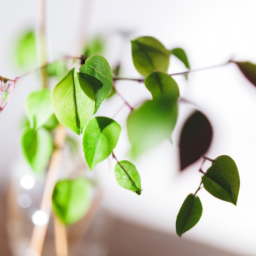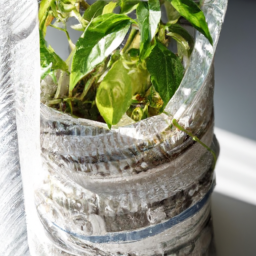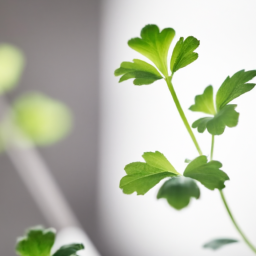
Are you looking for the best indoor light for plants to keep your green friends thriving all year round? Whether you’re a seasoned plant parent or just starting out with your indoor garden, finding the right lighting can make all the difference in the health and growth of your plants. In this blog post, we’ll explore the different types of indoor lights available and help you choose the best option for your specific plant needs. Let’s shed some light on this important topic!
Benefits of Using LED Grow Lights for Indoor Plants
When it comes to growing indoor plants, choosing the right lighting is crucial for their growth and health. LED grow lights have become increasingly popular among indoor gardeners due to their numerous benefits. In this article, we will discuss the advantages of using LED grow lights for your indoor plants.
Energy Efficiency
One of the main benefits of using LED grow lights is their energy efficiency. LED lights consume significantly less energy compared to traditional lighting options such as incandescent or fluorescent lights. This means that you can save money on your electricity bill while providing your plants with the light they need to thrive.
LED grow lights also produce less heat than other types of lighting, reducing the risk of overheating your plants. This is especially important for indoor gardens where temperature control can be a challenge. With LED lights, you can keep your plants at the optimal temperature without worrying about excessive heat.
Additionally, LED grow lights have a longer lifespan than traditional lighting options, saving you money on replacement costs in the long run. This makes them a cost-effective choice for indoor gardeners looking to maximize their plant growth without breaking the bank.
Customizable Spectrum
Another advantage of using LED grow lights is their customizable spectrum. LED lights can be adjusted to emit specific wavelengths of light that are most beneficial for plant growth. This means you can tailor the lighting to meet the specific needs of different types of plants at different stages of growth.
For example, plants in the vegetative stage require more blue light to promote leafy growth, while plants in the flowering stage need more red light to stimulate flower production. With LED grow lights, you can easily adjust the spectrum to provide your plants with the right light at the right time, maximizing their growth potential.
LED grow lights also emit very little infrared or ultraviolet light, reducing the risk of damage to your plants. This makes them a safe and effective lighting option for indoor gardens where plant health is a top priority.
Low Maintenance
LED grow lights require minimal maintenance compared to other types of lighting. They have a solid-state design that is durable and long-lasting, reducing the need for frequent replacements or repairs. This means you can spend less time and money on maintaining your lighting system and more time enjoying your thriving indoor garden.
LED grow lights also do not contain any hazardous materials such as mercury, making them environmentally friendly and safe for use around plants and pets. Their low heat output also reduces the risk of fire hazards, giving you peace of mind when using them in your indoor garden.
In conclusion, LED grow lights offer numerous benefits for indoor plants, including energy efficiency, customizable spectrum, and low maintenance. By choosing LED lights for your indoor garden, you can provide your plants with the light they need to flourish while saving money and reducing your environmental impact. Give your plants the best indoor light with LED grow lights!

Factors to Consider When Choosing the Best Indoor Light for Plants
Light Intensity
When it comes to choosing the best indoor light for your plants, one of the most important factors to consider is light intensity. Different plants have different light requirements, so it’s essential to match the light intensity of your indoor light to the specific needs of your plants.
Plants that require high light levels, such as succulents and cacti, will need a bright light source, such as a grow light with high wattage or a fluorescent light placed close to the plants. On the other hand, plants that thrive in low light conditions, like ferns and peace lilies, will do well with a less intense light source, such as a lower wattage grow light or a LED light placed further away from the plants.
It’s important to research the light requirements of your specific plants and choose an indoor light that provides the right intensity to ensure healthy growth and development.
In addition to light intensity, the duration of light exposure is also crucial. Most plants require around 12-16 hours of light per day to thrive, so be sure to set a timer or schedule your indoor light accordingly to provide the necessary amount of light for your plants.
Light Spectrum
Another important factor to consider when choosing the best indoor light for plants is the light spectrum. Different plants have different light spectrum requirements, with most plants needing a full spectrum light source that mimics natural sunlight.
Full spectrum lights provide a balanced combination of red, blue, and white light, which is essential for promoting healthy growth, flowering, and fruiting in plants. LED grow lights are a popular choice for indoor plant lighting, as they can be customized to provide the specific light spectrum needed for different plant varieties.
It’s important to choose an indoor light that offers a full spectrum of light to ensure that your plants receive the necessary wavelengths for photosynthesis and overall plant health. Avoid using standard incandescent or halogen lights, as they do not provide the full spectrum of light that plants need for optimal growth.
In addition to light spectrum, the distance between the light source and the plants is also important. Be sure to position your indoor light at the correct distance from your plants to prevent burning or light stress, while still providing adequate light for healthy growth.
Energy Efficiency
When selecting the best indoor light for plants, it’s important to consider energy efficiency. LED grow lights are a popular choice for indoor plant lighting due to their energy efficiency and long lifespan. LED lights consume less energy than traditional grow lights, making them a cost-effective and environmentally friendly option for indoor gardening.
In addition to energy efficiency, LED grow lights also produce less heat than traditional grow lights, reducing the risk of overheating and damage to your plants. This makes LED lights a safe and efficient choice for providing the necessary light for your indoor plants without risking plant health.
When choosing an indoor light for your plants, be sure to select an energy-efficient option, such as LED grow lights, to save on energy costs and promote sustainable indoor gardening practices. Consider the wattage, lifespan, and energy consumption of the light source to ensure that it meets the needs of your plants while also being environmentally friendly.
In conclusion, when choosing the best indoor light for your plants, consider factors such as light intensity, light spectrum, and energy efficiency to provide the optimal lighting conditions for healthy plant growth. By selecting the right indoor light for your plants, you can create a thriving indoor garden that flourishes year-round.

Top 5 Indoor Plant Lights for Healthy Growth and Blooming
Welcome plant lovers! If you’re looking to give your indoor plants the best care possible, choosing the right indoor light is crucial for their growth and blooming. In this guide, we will explore the top 5 indoor plant lights that will help your plants thrive.
1. LED Grow Lights
LED grow lights are a popular choice among plant enthusiasts for their energy efficiency and effectiveness in promoting plant growth. These lights emit a full spectrum of light that closely mimics natural sunlight, providing your plants with the essential wavelengths they need for photosynthesis.
When choosing LED grow lights for your indoor plants, look for lights with adjustable settings for different growth stages. You can also opt for full-spectrum LED grow lights that provide a balanced mix of red, blue, and white light for optimal plant growth and flowering.
LED grow lights are long-lasting and produce less heat compared to traditional grow lights, making them a safe and efficient choice for indoor plant cultivation.
2. Fluorescent Grow Lights
Fluorescent grow lights are another popular choice for indoor plant lighting due to their affordability and versatility. These lights come in two main types: T5 and T8 fluorescent tubes. T5 tubes are more energy-efficient and produce a higher light output, making them ideal for promoting plant growth.
When using fluorescent grow lights for your indoor plants, ensure that the lights are placed close to the plants to provide adequate light intensity. You can also use a combination of warm white and cool white fluorescent tubes to provide a balanced spectrum of light for your plants.
Fluorescent grow lights are a cost-effective option for indoor plant enthusiasts looking to provide their plants with the light they need for healthy growth and blooming.
3. High-Pressure Sodium (HPS) Grow Lights
High-Pressure Sodium (HPS) grow lights are a popular choice for indoor plant cultivation, especially for flowering plants. These lights emit a red-orange spectrum of light that promotes flowering and fruiting in plants, making them ideal for blooming plants.
When using HPS grow lights for your indoor plants, it’s important to provide proper ventilation and cooling to prevent heat stress on the plants. You can also combine HPS grow lights with metal halide (MH) grow lights for a balanced spectrum of light that promotes both vegetative growth and flowering.
HPS grow lights are a great choice for indoor plant enthusiasts looking to boost blooming and fruiting in their plants, providing them with the light they need for healthy growth and development.
Recap of this article
Are you looking to bring some greenery into your home but struggling to keep your plants thriving? One of the most important factors for indoor plant growth is the type of light they receive. When it comes to choosing the best indoor light for your plants, it’s important to consider a few key factors.
First, it’s important to understand that not all indoor lights are created equal. While natural sunlight is ideal for plant growth, not all homes have access to ample sunlight. In these cases, artificial grow lights can be a great alternative. LED grow lights are a popular choice for indoor plant enthusiasts as they are energy-efficient, long-lasting, and provide the full spectrum of light that plants need to thrive. When choosing a grow light, be sure to consider the specific needs of your plants, such as the amount of light they require and the color temperature of the light. With the right indoor light, you can create the perfect environment for your plants to flourish all year round.
Check Out These FAQs:
Q1. What is the best type of indoor light for plants?
A1. The best type of indoor light for plants is usually full-spectrum LED grow lights. These lights mimic natural sunlight and provide the necessary light spectrum for optimal plant growth.
Q2. How far should indoor grow lights be from plants?
A2. Indoor grow lights should typically be positioned about 12-18 inches away from the tops of the plants. This distance helps prevent burning the plants while still providing them with enough light for photosynthesis.
Q3. How many hours of light do indoor plants need?
A3. Indoor plants generally need about 12-16 hours of light per day to thrive. It’s essential to mimic the natural daylight cycle to promote healthy growth and flowering.
Q4. Can I use regular LED lights for indoor plants?
A4. While regular LED lights can provide some light for indoor plants, they may not have the full spectrum of light that plants need for optimal growth. It’s best to use full-spectrum LED grow lights specifically designed for plant growth.
Q5. Do indoor plants need darkness at night?
A5. Yes, indoor plants do need darkness at night to rest and undergo essential processes like respiration. Providing a consistent light-dark cycle helps maintain the plant’s natural rhythm and overall health.
Dr. Olivia Green is a botanist with over two decades of experience in indoor plant cultivation. She holds a Ph.D. in Plant Biology and has dedicated her career to researching plant behavior in controlled environments. Dr. Green is passionate about helping plant enthusiasts master the art of indoor gardening through her extensive knowledge and practical insights.


